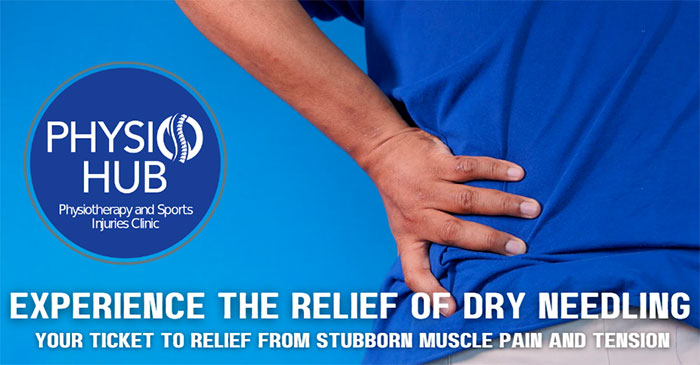Dry Needling
This treatment involves insertion of needles into muscle and skin, specifically aimed at certain problem areas in order to relieve the symptoms, this process is known as myofacial trigger targerting.
A variety of conditions may be treated with dry needling including:
- Neck, back and shoulder pain
- Arm pain (tennis elbow, carpal tunnel, golfer’s elbow)
- Jaw pain
- Tendon pains
- Buttock pain and leg pain (sciatica, hamstrings strains, calf tightness/spasms)

Dry Needling is not to be the mainstay of your physio treatment but used in conjunction with your exercise regime. It is important to use the momentary pain relief and/or increased range of motion from this treatment to focus on increasing your strength and flexibility in order to fully resolve your initial problem.
It is essential to recognize that dry needling should not serve as the sole foundation of physiotherapeutic intervention but rather be integrated into a comprehensive treatment plan. The goal is to complement the existing exercise regime, leveraging the momentary pain relief and enhanced range of motion achieved through dry needling to facilitate and expedite the rehabilitation process.
Patients are encouraged to use the temporary relief provided by dry needling as an opportunity to focus on strengthening and increasing flexibility. By incorporating targeted exercises into their routine, individuals can address the root causes of their initial problems, fostering a more complete and lasting resolution.
This integrated approach, combining dry needling with tailored exercises, aims to optimize both short-term relief and long-term recovery, providing patients with a well-rounded and effective treatment strategy for their specific conditions.
FAQ's
Dry needling is a therapeutic technique involving the insertion of needles into specific muscle and skin areas to alleviate pain and discomfort. Unlike acupuncture, which is rooted in traditional Chinese medicine and focuses on balancing energy flow, dry needling targets myofascial trigger points to release tension and improve muscle function.
Sensations during dry needling vary, but many patients describe it as a mild discomfort or a quick pinch. The needles used are thin, and the procedure is typically well-tolerated. The therapist will insert needles into targeted areas, and you may experience a brief muscle twitch response. After the session, some soreness is normal, but it often gives way to improved mobility and reduced pain in the following days.
The number of sessions needed varies depending on the condition being treated and individual response. Many patients experience relief after the first session, but a course of several sessions may be recommended for optimal and lasting results. The therapist will assess your progress and adjust the treatment plan accordingly.
While dry needling is generally safe, some individuals may experience mild side effects such as temporary soreness, bruising, or fatigue. Serious complications are rare but can include infection or excessive bleeding. It's crucial to inform your therapist of any existing medical conditions or medications you are taking to ensure the procedure's safety and effectiveness. If you have a fear of needles, discussing this with your therapist beforehand can help address any concerns and tailor the experience to your comfort level.